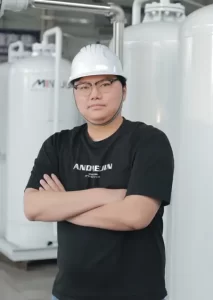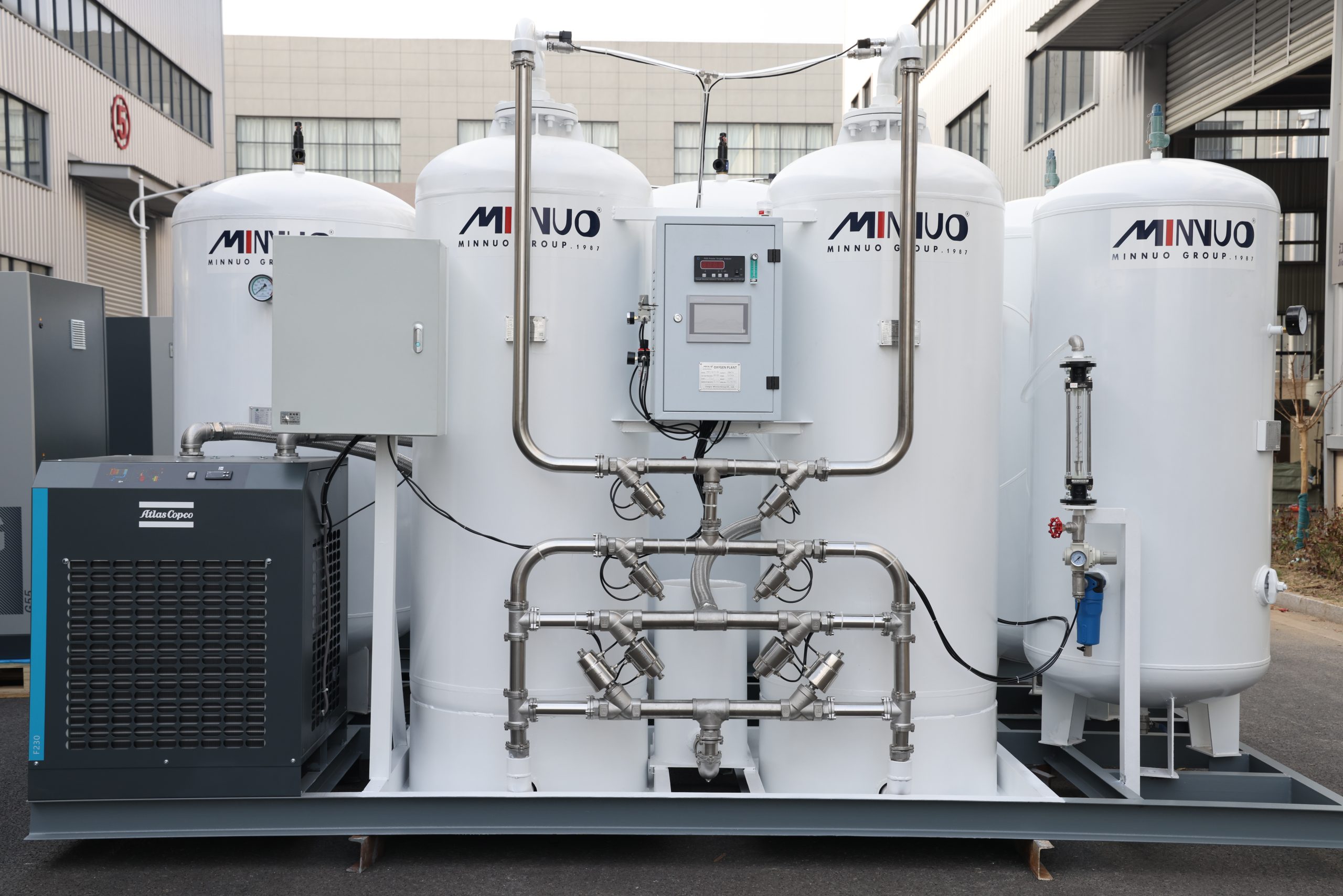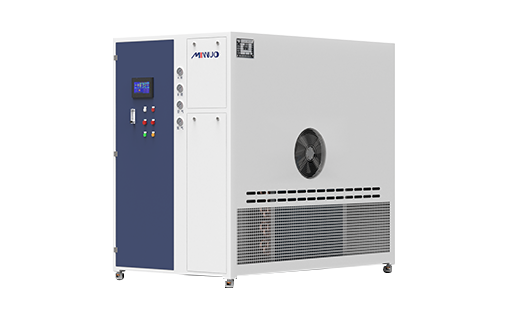A nitrogen booster is significantly transforming industries that require high-pressure nitrogen. From chemicals and food processing to manufacturing, nitrogen boosters provide these sectors with reliable and continuous high-pressure nitrogen supply. As a leader in gas booster technology, MINNUO focuses on designing and manufacturing efficient and stable nitrogen booster equipment. This article will delve into the working principle, technical specifications, industry applications, and advantages of nitrogen boosters in enhancing energy utilization efficiency.
A nitrogen booster increases the pressure of a low-pressure nitrogen source to the required high pressure. It is widely used in industries like chemicals, food processing, and metalworking. The compressor process boosts nitrogen pressure, ensuring a stable high-pressure supply. Depending on the compression method, nitrogen boosters come in piston, diaphragm, and centrifugal types, catering to different industrial needs. They effectively reduce nitrogen transportation and storage costs, improve production efficiency, and provide flexible and safe high-pressure gas supply.

1. Working Principle of Nitrogen Booster
The core function of a nitrogen booster is to increase the pressure of the incoming nitrogen. Its operation process is straightforward and primarily revolves around the compression stage:
Low-pressure Nitrogen Input:
The nitrogen booster receives low or medium-pressure nitrogen from upstream sources. This source can be:
- The output from an on-site nitrogen generator (e.g., PSA, VPSA nitrogen generators).
- Low-pressure nitrogen vaporized from a liquid nitrogen storage tank.
- Low-pressure nitrogen from the plant’s nitrogen network.
Compression / Boosting Process:
This is the core stage of the nitrogen booster. Depending on the type of booster (e.g., piston, diaphragm, centrifugal), nitrogen is compressed mechanically through processes like piston movement, diaphragm reciprocation, or high-speed impellers. In this process, gas molecules are tightly compressed, reducing volume and significantly increasing pressure. Boosters typically include multi-stage compression and inter-stage cooling (air or water cooling) to achieve higher final pressures and control gas temperature.
High-pressure Nitrogen Output, Storage / Use:
The compressed high-pressure nitrogen is sent downstream:
- Directly supplying production equipment or process points that require high-pressure nitrogen.
- Stored in high-pressure cylinders (e.g., steel bottles, tube bundles) for future use or as a buffer.
- Filled into high-pressure nitrogen cylinders.
2. Types of Nitrogen Boosters (Based on Compression Principle)
| Type | Features | Optimal Pressure Range | Typical Applications |
| Piston / Plunger | Sturdy, capable of reaching very high pressures, highly efficient, relatively complex maintenance. | Medium to Ultra High Pressure (1000+ bar) | Gas filling, test rigs, high-pressure cleaning, valve testing |
| Diaphragm | Isolates compression chamber from lubrication system, no gas contamination, good sealing, suitable for high-purity gases. | Medium to High Pressure (few bar to several hundred bar) | Food & beverage, electronics, chemicals, laboratories |
| Centrifugal | High flow, continuous stable operation, single-stage pressure ratio is low, usually requires multi-stage series. | Medium Pressure (few bar to several tens of bar) | Large air separation, chemical process boosting |
| Screw | Wide flow range, stable operation, relatively easy maintenance. | Medium Pressure (few bar to tens of bar) | General industrial boosting, gas transportation |
3. Industry-Specific Applications
Chemicals & Oil:
In the chemical and oil industries, high-pressure nitrogen is used for reactor purging and pressure holding, pipeline and container leak testing, catalyst regeneration, tank nitrogen sealing, and pushing materials out of pressure vessels (e.g., chemical delivery). Nitrogen boosters provide stable and reliable high-pressure nitrogen, ensuring the safety and efficiency of these critical processes.
Food Processing:
In the food and beverage industry, high-pressure nitrogen is primarily used for:
- Isobaric filling: In beer and beverage bottling lines, high-pressure nitrogen is injected into bottles or cans to create back pressure, preventing spillage and maintaining carbonation.
- Pneumatic conveying: Using high-pressure nitrogen to safely and hygienically convey powdered food ingredients (e.g., milk powder, cocoa powder).
- Pressure-assisted processing: In high-pressure pasteurization (HPP) processes, nitrogen is sometimes used as the pressure transmission medium.
Metalworking:
- Laser cutting: High-pressure nitrogen is ideal for cutting reflective materials such as stainless steel and aluminum alloys. It blows away molten metal, resulting in clean, oxidation-free cutting edges.
- High-pressure water jet cutting: Pressurized water requires high-pressure gas (often nitrogen) to drive it.
Powder metallurgy:
High-pressure nitrogen is used in isostatic pressing.
Other Applications:
- Electronics manufacturing: High-pressure nitrogen for chip packaging tests, SMT reflow furnaces.
- Aerospace: Aircraft tire inflation, system testing, and inerting.
- Automotive manufacturing: Airbag testing, component testing.
- Gas filling: Compressing nitrogen from low-pressure sources (e.g., nitrogen generators, liquid nitrogen vaporization) into high-pressure cylinders (steel bottles, tube bundles).
- Research & Laboratories: Various experimental equipment requiring high-purity high-pressure gases.
4. Key Advantages of Nitrogen Boosters
Cost-effectiveness:
By boosting low-pressure nitrogen (e.g., from nitrogen generators or liquid nitrogen vaporizers) to the required high pressure on-site, nitrogen boosters significantly reduce the transportation costs of high-pressure nitrogen (avoiding the need to purchase and transport large quantities of high-pressure cylinders or liquid nitrogen) and storage costs (reducing investment in high-pressure storage tanks and space usage). Companies only need to boost as required, optimizing nitrogen usage costs.
Flexibility & Convenience:
- Adjust output pressure and flow based on actual demand.
- Provide on-site high-pressure nitrogen on-demand, eliminating waiting for external suppliers.
- Simplify high-pressure nitrogen supply chain management.
Safety & Reliability:
The on-site boosting model eliminates risks associated with transporting high-pressure gases. MINNUO’s nitrogen boosters are equipped with multiple safety systems such as pressure relief valves, temperature monitoring, overload protection, automatic alarms, and emergency shutdown devices to ensure the equipment maintains high safety standards during operation. They provide a stable, reliable high-pressure gas source, ensuring continuous production.
Energy-saving Potential (Compared to Outsourced High-Pressure Gas):
While boosting itself consumes energy, on-site boosting of self-produced low-pressure nitrogen is usually more energy-efficient and economical than purchasing high-pressure bottled gas or re-pressurizing liquid nitrogen (including transportation, evaporation losses, and supplier profits), especially for users with high continuous gas demand. Modern booster designs also focus on energy efficiency optimization.
5. Technical Specifications: Choosing the Right Nitrogen Booster
- Inlet Conditions:Inlet Pressure: The minimum and maximum pressure range the booster can accept at the inlet (e.g., 3-10 bar g).
- Inlet Flow: The maximum flow the upstream source can provide (Nm³/h or SCFM).
Output Requirements:
- Required Outlet Pressure: The highest operating pressure required by the process (bar g or psi).
- Required Flow (at Outlet Pressure): The minimum and maximum flow required by the process at outlet pressure (Nm³/h or SCFM @ outlet pressure).
Gas Purity:
Ensure that the booster’s materials (seals, pipes, chambers) and processing techniques do not contaminate nitrogen based on application needs (e.g., diaphragm boosters are suitable for high-purity requirements).
Drive Type:
Electric (AC/DC), pneumatic. Depends on site energy conditions and explosion-proof requirements.
Cooling Method:
Air-cooled (most common), water-cooled (high power or special requirements). Affects equipment size and installation environment requirements.
Control & Interfaces:
Manual control, automatic start/stop, pressure adjustment (variable frequency), remote monitoring, instrument interfaces, etc.
6. Installation & Maintenance
Site Preparation:
- Foundation: A stable, level base capable of supporting the equipment’s operational vibrations.
- Environment: Clean, well-ventilated, appropriate temperature (meeting equipment specifications), avoiding dust, oil, or corrosive gases. Consider noise control.
- Utilities: Stable power supply (voltage, frequency, and power meet requirements), cooling water source (if needed for water-cooled models), compressed air source (if pneumatic drive).
- Gas Connections: Properly sized and pressurized inlet pipes and high-pressure outlet pipes leading to the consumption point or storage tanks. Pipes should be clean and dry.
Routine Maintenance (Following Manufacturer Manual):
- Daily / Shift: Check oil levels (for oil-lubricated models), coolant levels (for water-cooled models), and listen for abnormal noise/vibration/leaks. Drain filter condensate (if inlet air contains moisture).
- Weekly / Monthly: Clean cooling fins (air-cooled), check fasteners, visually inspect key components (belts, couplings, etc.).
- Quarterly / Semi-annually: Replace lubricating oil and filters (oil, air), check valve and seal conditions.
- Annually / According to Running Hours: Perform comprehensive maintenance, which may include replacing worn parts (piston rings, seals, valve discs/seats), calibrating sensor instruments, and checking motor/drive systems. For diaphragm models, replace diaphragms according to schedule.
7. Frequently Asked Questions (FAQs)
Q1: What industries can MINNUO’s nitrogen boosters be used in?
A: Our nitrogen boosters are widely used in industries requiring high-pressure nitrogen, including but not limited to chemicals, oil & gas, food & beverage processing, metal manufacturing (laser cutting, welding), electronics, aerospace, automotive manufacturing, gas filling stations, and research laboratories.
Q2: Will the nitrogen booster affect gas purity?
A: The boosting process itself should not cause contamination. MINNUO offers boosters with different configurations:
- For high-purity applications (e.g., food, electronics, pharmaceuticals), we primarily recommend diaphragm-type boosters. These feature complete separation between the compression chamber (gas-contact area) and drive components (lubrication) to ensure zero oil contamination. Materials such as stainless steel, special alloys, and compatible seals are optimized for high-purity gases.
- For applications with less stringent purity requirements (e.g., some chemical purging, testing), piston-type (using food-grade or synthetic lubricants and equipped with efficient oil filters) or oil-free screw-type boosters may also be options. Specify your purity level, and we’ll recommend the most suitable model.
Q3: Can nitrogen output pressure and flow be adjusted based on demand?
A: Yes. MINNUO’s nitrogen boosters typically offer several control methods:
- Pressure Adjustment:
- Load/Unload Control: When the output pressure reaches the set upper limit, the booster unloads (idles or shuts down); when the pressure drops below the lower limit, it reloads. This is the basic pressure control.
- Variable Frequency Drive (VFD): Adjusts the motor speed to continuously vary compression capacity, enabling more precise and smoother output pressure control while significantly saving energy when the load fluctuates (highly recommended for applications with variable flow).
- Flow Adjustment:
- By adjusting the inlet valve opening or (for variable frequency models) adjusting the speed, the actual output flow can be changed.
- The flow adjustment range is usually limited by the booster’s minimum stable operating flow and maximum design flow. The specific range depends on the model parameters. Customers can choose the most suitable control solution based on their actual working conditions.
8. Case Study: MINNUO’s Real-World Application
Customer: A large oil service company in the Middle East
Challenge:
- The offshore drilling platform requires a large amount of high-purity high-pressure nitrogen (for downhole tool operation and testing).
- Traditionally, they relied on shipping high-pressure nitrogen cylinders, which were extremely costly (transport, leasing, handling), unreliable (affected by weather, shipping schedules), and had storage space limitations.
- The platform had its own VPSA nitrogen generator, but the output pressure (~7 bar) was much lower than the required pressure (> 700 bar).
Solution:
- Installation of a custom high-pressure diaphragm-type nitrogen booster from MINNUO.
- Inlet: Directly connected to the platform’s PSA nitrogen generator output (99.5% purity, 7 bar).
- Output: Maximum pressure of 850 bar, flow meets peak demands.
- Key Requirements: Zero oil contamination assurance (diaphragm design), adaptation to harsh offshore environments (salt mist, vibration), highly integrated skid for easy installation, strict safety certifications (ATEX, etc.).
- Configuration: Multi-stage diaphragm boosting, air-cooled, VFD control, fully automated operation with safety monitoring systems.
Results:
- Reduced Operating Costs: Completely eliminated transportation, leasing, and handling fees for high-pressure nitrogen cylinders, expected to save over $15,000 per month.
- Reliable Supply: On-site production of high-pressure nitrogen as needed, free from external logistics constraints, ensuring critical operation timelines.
- Purity Guarantee: Diaphragm design perfectly meets the stringent purity requirements for downhole tools, avoiding tool failure risks.
- Space Savings & Increased Safety: Reduced storage area for high-pressure cylinders, eliminating associated handling and potential leakage risks.
- Efficiency Improvement: On-demand availability of high-pressure nitrogen, shortening preparation time for operations.
9. Future Trends for Nitrogen Boosters
Intelligence and IoT:
- Advanced sensor integration for real-time monitoring of device status (pressure, temperature, vibration, energy consumption, key component lifespan).
- Remote monitoring and fault diagnosis platforms for predictive maintenance, reducing unexpected downtime.
- Data-driven optimization, automatically adjusting operating parameters (e.g., variable frequency drive) to achieve optimal energy efficiency.
Higher Efficiency Design:
- VFD drives become standard, especially in applications with variable flow demands.
- Optimized thermal management (more efficient cooling systems).
- Improved compression chamber design and materials to reduce internal leakage and increase volumetric efficiency.
Modular and Compact Design:
- More integrated and compact skid-mounted modules for easier transportation, installation, and deployment in space-constrained sites.
- Standardized modules for quick configuration and expansion.
Materials and Manufacturing Advances:
- Use of lighter, stronger, and more corrosion-resistant materials (e.g., composite materials, special alloys).
- Application of additive manufacturing (3D printing) for complex structural components, optimizing performance.
Sustainability Focus:
- Lower noise levels.
- Improved long-term reliability and maintainability, reducing waste.
- Exploration of green power sources for operation.
10. MINNUO’s Advantages
- Core Boosting Technology: Focused on high-pressure gas boosting, mastering core boosting technologies such as piston, diaphragm, and others to provide solutions from tens of bars to thousands of bars.
- Customization Ability: Deep understanding of diverse industry needs (pressure, flow, purity, environment, safety), offering tailored boosting systems rather than just standard products.
- Exceptional Quality and Reliability: Using high-quality materials, precision manufacturing processes, and stringent testing procedures to ensure long-term stable operation in harsh industrial environments.
- Efficient Energy-saving Design: Optimized system design, promoting energy-saving technologies like VFD control, helping customers reduce operating costs.
- Comprehensive Technical Support and Service: Offering full lifecycle services, from project consulting and system design to installation, commissioning, after-sales maintenance, spare parts supply, and technical training.
- Global Experience and Certifications: Extensive experience serving industries and regions globally, with products meeting major international safety and quality standards (e.g., CE, ASME, PED, ATEX).
11. Conclusion
In the future, nitrogen boosters will continue to enhance their intelligence, energy efficiency, and environmental performance. MINNUO is constantly driving technological innovation through advanced IoT integration and smart control, helping enterprises improve nitrogen management efficiency. Whether for large industrial applications or small and medium-sized enterprise needs, MINNUO offers flexible and reliable nitrogen boosting solutions for various industries.
By choosing MINNUO, you’re not just selecting a nitrogen booster, but a partner in technological advancement, helping your business gain a competitive edge in the global market.






 sales2:+86 17506119168
sales2:+86 17506119168

